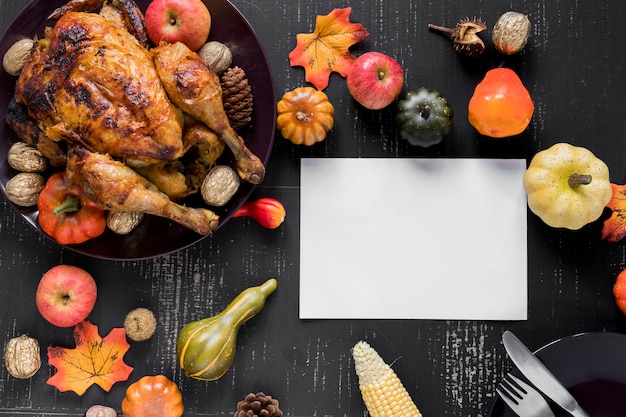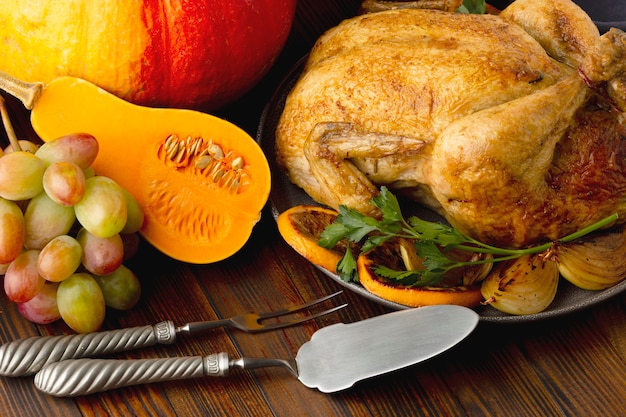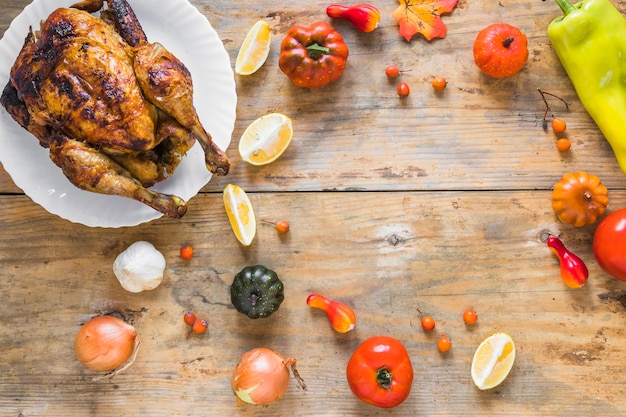Let’s be honest, grilling a turkey can seem a bit intimidating. But trust me, it's not as daunting as it seems. In fact, it’s a truly rewarding experience, and the results are absolutely delicious! I’ve been grilling for years, and let me tell you, there's nothing quite like the aroma of a perfectly grilled turkey wafting through the air. It's a feast for the senses, and I’m here to share my tried-and-true tips and tricks to help you achieve grill-master status with this Thanksgiving staple.
Think grilling a turkey is only for seasoned barbecue veterans? Think again! It’s actually pretty straightforward with the right guidance. We’ll break down everything you need to know, from choosing the perfect bird to mastering the grill. We’ll also tackle some common grilling challenges and answer those burning questions you might have about cooking a turkey on the grill. So grab a cuppa, settle in, and let's get grilling!
Part 1: Choosing Your Bird

The Turkey: Your Canvas
It all begins with the turkey. You want a bird that’s going to hold up to the heat and give you juicy, flavorful results. My go-to is a fresh, free-range turkey. These birds tend to have a deeper, more robust flavor and are often smaller in size, making them perfect for a smaller gathering. If you’re having a massive crowd, a frozen turkey will definitely do the trick, but remember to defrost it properly before you start. No one wants a half-thawed turkey situation, folks!
Size Matters: Finding the Perfect Fit
Choosing the right size turkey is crucial. You want a bird that fits comfortably on your grill without spilling over the edges. For a smaller gathering, a 10-12 pound turkey will be perfect. But if you’re hosting a big Thanksgiving bash, you might need to go for a 14-16 pounder. Remember, a well-chosen turkey is the foundation of a successful grilling experience.
Part 2: Prep Like a Pro: The Foundation for Success

Brining: The Secret to Juicy, Flavorful Turkey
Let me tell you, brining is the real deal. It’s the secret to achieving a juicy, flavorful turkey. It’s all about immersing the turkey in a saltwater solution that helps retain moisture and enhances the flavor. You can use a basic salt and water brine, or get fancy with herbs and spices. The key is to allow enough time for the brine to work its magic, preferably overnight. If you're short on time, you can opt for dry brining. Simply rub the turkey with a salt and spice mixture and let it sit in the fridge for a few hours. The longer, the better.
Spatchcocking: A Game Changer
Now, this is where things get really interesting. Spatchcocking, a technique that involves removing the backbone and flattening the turkey, is a game changer. It's simple, but it results in a faster cook time, more even cooking, and a beautiful, crispy skin that you can't resist.
- Remove the Backbone: Using a sharp knife, cut along both sides of the backbone. You don’t need to be a surgeon here. Just be careful and get it done! Then, gently remove the backbone. It’s a sacrifice we all have to make for deliciousness.
- Flatten the Turkey: Flip the turkey over and flatten it out with the palm of your hand, pressing down on the breast bone until it gives. Don’t be shy! It’s a turkey, not your mother-in-law.
Part 3: Setting the Stage: Choosing Your Grilling Equipment

The Grill: Your Weapon of Choice
You’ve got your turkey prepped, now it’s time to choose your grilling weapon. A gas grill offers consistent heat and control, while a charcoal grill provides that smoky, rustic flavor. It’s all about personal preference. Just make sure it’s big enough to comfortably accommodate your turkey. No one wants a turkey overflowing off the grill, right?
Indirect Heat: The Secret to a Perfectly Cooked Turkey
Here's the key to grilling a juicy, flavorful turkey: indirect heat. This means cooking the turkey over low heat, away from the direct flames. This method creates a more even cook and prevents the turkey from drying out. To achieve indirect heat on a gas grill, turn on only the burners on one side. On a charcoal grill, create a small pile of hot coals on one side and spread out the rest of the coals on the other side. This technique essentially mimics the environment of an oven, but with that irresistible grill-infused magic.
Part 4: Grilling Your Turkey: The Grand Finale
Getting Ready to Grill: Prepping Your Grill
Okay, the moment of truth has arrived! Let’s get this grilling party started! Preheat your grill to around 325°F (163°C) for indirect cooking. Before you throw that turkey on the grill, make sure your grill grates are well-oiled. This will prevent the turkey from sticking and help it release easily. If you’re using a charcoal grill, don’t forget to toss some wood chips on the hot coals for that smoky flavor.
Grilling Time: A Time-Tested Guide
The grilling time will vary depending on the size of your turkey, so keep a watchful eye. A good rule of thumb is to allow about 15 minutes per pound of turkey. For spatchcocked turkeys, the cooking time is significantly reduced, typically around an hour to an hour and a half.
internal temperature: The Crucial Test
Now, let's talk about the most important part: the internal temperature. It’s crucial to ensure your turkey reaches a safe internal temperature of 165°F (74°C) in the thickest part of the breast and thigh. This is the only way to guarantee a safe and delicious meal. Use a meat thermometer to check the temperature frequently, especially during the final stages of cooking.
Resting: A Crucial Step in the Process
Once your turkey has reached the desired internal temperature, it's time to let it rest. This allows the juices to redistribute throughout the meat, resulting in a more tender and flavorful bird. Let the turkey rest, covered, for at least 30 minutes before carving. Trust me, it's worth the wait.
Part 5: Mastering the Grill: Elevating Your Grilling Game
Flavor Bombs: Enhancing the Taste
Let’s talk flavor. There's no limit to what you can do here. Get creative with your spice rubs and marinades. You can use a simple salt and pepper rub, or get fancy with herbs, spices, and citrus. Don’t be afraid to experiment and find what you love.
Monitoring the Heat: A Balancing Act
Monitoring the heat is a key aspect of successful grilling. You want to make sure the heat is consistent but not too high. If the heat is too high, the turkey will burn on the outside before it's cooked through on the inside. On the other hand, if the heat is too low, the turkey will take forever to cook.
This is where your trusty meat thermometer comes in handy. It’ll tell you exactly how hot the turkey is, so you can adjust the heat accordingly. You can also use your grill’s temperature gauge, but don’t always trust those. They can be notoriously inaccurate.
Basting: Keeping it Moist
Basting is a great way to keep your turkey moist and flavorful. You can use a simple butter and herb mixture, or get creative with fruit juices, wine, or even beer. Just make sure to baste the turkey regularly, especially during the last 30 minutes of cooking. It’s a small effort for big rewards.
Part 6: Troubleshooting: Common Grilling Challenges and Solutions
Challenge 1: The Burnt Bird
If you find your turkey is getting too much colour on the outside before it's cooked through, don't panic! This is a common problem, and it's easily fixed. Simply adjust the heat by lowering the grill temperature or moving the turkey to a cooler part of the grill. If you’re using a gas grill, you can also turn off some of the burners.
Challenge 2: Dry Turkey Blues
Dry turkey is a major bummer. If your turkey is starting to look a bit dry, you can try basting it more frequently. This will help to keep the turkey moist and flavorful. You can also cover the turkey with foil during the last 30 minutes of cooking. This will trap in the moisture and prevent it from drying out.
Challenge 3: The Uncooked Beast
No one wants to eat a raw turkey. If you're unsure if your turkey is cooked through, check the internal temperature in the thickest part of the breast and thigh. It should reach 165°F (74°C). If it's not cooked through, cook it for a little longer and check the temperature again.
Part 7: Beyond the Basics: Grilling Variations for Adventurous Cooks
Grilled Turkey with a Twist: Injecting Flavor
Want to elevate your grilling game? Try injecting the turkey with a flavorful marinade. You can also add a side of grilled vegetables for a complete meal. Think roasted peppers, onions, zucchini, and mushrooms. It’s all about creating a beautiful symphony of flavors.
Spatchcocking: A Game Changer for Faster Cooking
If you’re looking for a faster and more flavorful way to grill your turkey, spatchcocking is the way to go. By removing the backbone and flattening the turkey, you’ll get a more even cook and a crispy skin. The grilling time will also be significantly reduced, which is a definite bonus.
Part 8: FAQs: Your Burning Questions Answered
Q1: How long should I let the turkey rest after grilling?
A1: Let the turkey rest for at least 30 minutes, covered, before carving. This allows the juices to redistribute throughout the meat, resulting in a more tender and flavorful turkey.
Q2: What's the best way to keep the turkey moist while grilling?
A2: Use a combination of brining, basting, and indirect grilling. Brining adds moisture to the turkey, basting keeps it moist during cooking, and indirect grilling prevents it from drying out.
Q3: What temperature should I grill the turkey at?
A3: Preheat your grill to around 325°F (163°C) for indirect grilling. Keep an eye on the temperature, adjusting as needed. Your trusty meat thermometer will be your best friend.
Q4: Can I use a smoker to grill a turkey?
A4: Absolutely! Smokers are a great option for grilling turkeys. You can use wood chips to add a smoky flavor to the turkey. Just make sure to keep the temperature low and slow.
Q5: Can I grill a turkey breast instead of a whole turkey?
A5: You can certainly grill a turkey breast, and it’s a great option for smaller gatherings. Just follow the same grilling guidelines as you would for a whole turkey.
Final Thoughts: The Joy of Grilled Turkey
So, there you have it! My ultimate guide to perfect grilled turkey. Grilling a turkey can be a bit daunting at first, but once you get the hang of it, it's a breeze. And the results are totally worth the effort.
Remember, the key to grilling a delicious turkey is patience, practice, and a little bit of grill-master confidence. So, fire up your grill, grab a cold drink, and get ready to impress your friends and family with a truly unforgettable turkey feast.
Happy grilling!
Everyone is watching

How to Cook Frozen Lobster Tails Perfectly: A Step-by-Step Guide
RecipesLobster. Just the word conjures up images of lavish meals, special occasions, and a taste of luxury. But let's...

Pigs in a Blanket Cooking Time: How Long to Bake for Perfect Results
RecipesAh, pigs in a blanket. Just the name conjures up images of those delightful little parcels of crispy pastry en...

Pork Fillet Cooking Time: How Long to Cook It Perfectly
RecipesPork fillet, or tenderloin as it's sometimes called, is a real favourite in our house. It's so versatile, and...

The Ultimate Guide to Tender, Juicy Pulled Pork
RecipesRight, let's talk pulled pork. It's one of those dishes that just screams "comfort food," doesn't it? I mean...

The Ultimate Guide to Cooking Sweet Potatoes: From Roasting to Mashing
RecipesSweet potatoes. Just the name conjures up images of warm, comforting dishes, bursts of vibrant color, and a to...
